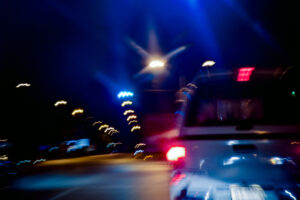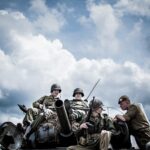Unlawful traffic stops and drunken driving charges

Photo credit: Chaikom / Shutterstock.com
Most arrests for drunk driving occur after a traffic stop. The officer initiates a traffic stop, detects signs of intoxication, conducts field sobriety tests, and typically concludes with a preliminary breath test (“PBT”). If the driver has consumed enough alcohol that a PBT demonstrates his or her blood alcohol content (“BAC”) is over the legal limit, the officer will arrest the driver for drunk driving. Upon reaching the police station, the driver will be subjected to additional breath tests, using a more sophisticated equipment.
Given the amount of evidence created in this chain of events, a successful defense is challenging. However, there are several key events occurring during the arrest which can be attacked. This blog focuses solely on the traffic stop itself, which implicates the Fourth Amendment constitutional right to be free from unreasonable searches and seizures.
The Fourth Amendment requires a police officer have a lawful basis for initiating a traffic stop—law enforcement is forbidden from simply stopping people to investigate. The most common basis for initiating a stop is where the officer has either (1) personally witnessed a traffic violation; or (2) reasonably believes the driver is engaged in criminal activity. Each of these bases have different legal standards.
In Whren v United States, 517 US 806 (1996), the United States Supreme Court held that an officer must have ‘probable cause’ to believe a driver has committed a traffic violation in order to perform a lawful stop (seizure). Courts have generally avoided defining probable cause, stating that it is a commonsense phrase that is hard to define legally. A general definition describes it as “where the facts and circumstances within the officers’ knowledge, and of which they have reasonably trustworthy information, are sufficient in themselves to warrant a belief by a man of reasonable caution that a crime is being committed.” Brinegar v United States, 338 US 160 (1949). As a practical matter, probable cause in this context generally means that officer personally witnessed the traffic violation. Notably, anonymous tips regarding traffic violations are insufficient to establish probable cause.
This stands in contrast to the second basis, which requires ‘reasonable suspicion’ that criminal activity is afoot. The burden of establishing reasonable suspicion is lower than probable cause. It requires that an officer have a reasonable belief, based upon articulable facts that criminal activity is afoot. The doctrine was the subject of Terry v Ohio, 392 US 1 (1968), where the Supreme Court held that a person may be briefly stopped and detained if a police officer has a reasonable suspicion that the person has been involved in activity constituting a punishable crime.
A skilled drunk driving attorney understands these standards and will review all evidence available to determine whether the stop was lawful. If a Court finds the stop unlawful, all evidence gathered after the stop is inadmissible, and absent unusual circumstances, the case is dismissed.
Fortunately, most police cruisers have dashcams, providing video evidence of the drive’s conduct preceding the stop. If the video does not show a traffic violations or indicia of criminal activity, the driver has a strong case for dismissal. More frequently, however, the driver makes a minor mistake, such as briefly crossing the fog line while rounding a bend. This is where a skilled drunk driving attorney can really make a difference. After researching case law, the attorney will prepare a legal brief arguing why the minor mistake was insufficient to serve as the basis for a traffic stop.
Many cases are far more complicated that previously described. Third-party witnesses, serial driving errors of a minor nature, extended timelines, previous history of the parties, etc. are just a few examples of additional factors to be considered. An experienced drunk driving attorney will identify unlawful stops and fight to make sure your Fourth Amendment rights are not trampled.


